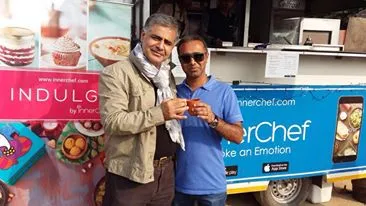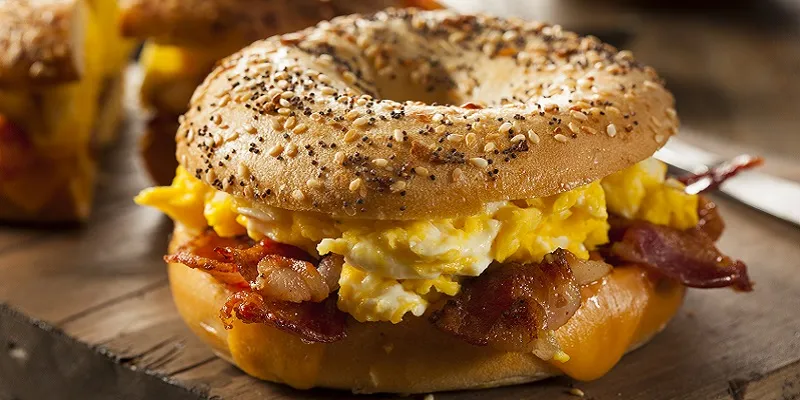From ingredient boxes to an Internet restaurant, InnerChef today sees close to a 1,000 orders a day
When Rajesh Sawhney, Sanjeev Singhal and Bal DiGhent were looking at an idea for starting up, they first thought of an ingredient box. The idea was to send a box filled with ingredients that are prepped and in the perfect amount required to create a dish, the recipe for which is also provided.
This concept was launched in April 2015, but within a few months the founders realised that the model would take time to scale and the Indian market would take close to five years to warm up to the idea. “People were liking it, and we were growing but it wasn’t as fast as we realised we needed to grow,” adds Rajesh.
The important shifts
The startup, therefore, decided to pivot, and started with ready-to-eat foods. The first product was a combo box of a panini, salad and juice. It was priced between Rs 200 and 250, but it nevertheless connected with the young working professionals, who were looking for quick healthy meals.
The next important shift came with the idea that desserts can be sold along with food. So, in October last year, the InnerChef launched its desserts platform, Indulge. The team were thinking why make their own desserts, when there already were by roping in the many talented women entrepreneurs running dessert businesses from their home.
“Today, Indulge contributes to 30 per cent of our business and is the fastest growing category in the food menu,” adds Rajesh. He says that experimenting and focussing on customer needs has gotten InnerChef ahead.

Working with different models
InnerChef has a food model, where the food is prepared in various central kitchens, and there is a dessert model that works more like a hyperlocal marketplace. While the sourcing works from different locations, the delivery systems, packaging and consumer interactions work along one channel.
Indulge works on the curated marketplace model, which goes through a screening and tasting process, post which partners are invited to the platform. Most of the partners on the Indulge platform are women. “We are looking at 100 cities with over 1000 home bakers and we are also focussing on Indian desserts and ice-creams,” adds Rajesh.
Phanindra Sama, one of the investors at InnerChef, the team played a stronger role in his decision to invest. “Also, I have been to Bal’s restaurant multiple times and I was sure that quality was one thing InnerChef would never compromise on. The team is a brilliant combination of domain and technical expertise,” adds Phanindra.

Expanding geographies
After testing waters in Gurgaon and Delhi, InnerChef began expanding into other markets and cities last November. Bengaluru being the strong second, there are three kitchens present in the city: they started with Maratahalli, moved to Koramangala and with the acquisition of EatOnGo in March this year, the team believes they can capture the Indiranagar market.
The team also acquired Flavour Labs, the food truck company in Gurgaon in March, thus making their move into the mobile kitchen space. The team also launched their kitchens in Mumbai and will be soon looking at Hyderabad, Chennai and West Delhi markets.
“If you look at the food business, the delivery model in itself is a $15-billion industry. Today there are different kinds of players in the market like Dominos, aggregators and discovery models. But the InnerChef kind of model has control over the quality of the food, backend, supply-chain and menu, which makes it very important for an Internet-based restaurant,” adds Sruti Komarappagari, Endiya Partners, investor at InnerChef.
Setting up the ops
Rajesh says that since food is a perishable item, they wanted to have close supervision. They knew that they had to follow a hub-and-spoke model to expand. However, now the challenge is to ensure that the same supervision and quality is met across different cities.

“Setting up a kitchen isn’t as complicated as it is made out to be. There is a team of cooks, chefs and workers who are collaborative. The size of the kitchen, orders, catchment areas, capacity and location all have a certain science associated with them. We are learning as we go, it makes sense to first begin with denser urban areas and consumer sets,” adds Rajesh.
With an average order value of Rs.500, with products ranging from Rs 100 to 300, InnerChef is one of the more expensive foodtech players in the market. This means that the focus is more on condominiums and offices.
The team claims to be growing at 40 percent month-on-month. It gets over 1,000 orders in a day.
Sateesh Andra, Managing Director, Endiya Partners, investor at InnerChef adds that metrics like cost of customer acquisition, repeat orders placed by customers, operational expenses and corporate expenses play a strong role. “When we looked at the health metrics of InnerChef they were very healthy and kitchens are doing very well. The team is carefully building the business brick by brick, which is what matters a lot,” says Sateesh.
The interesting saga of the food business
The foodtech business has several players. FreshMenu, which raised its second round of funding in January, follows a similar model. The other bigger players in the business include Zomato, Swiggy and HolaChef.
Sateesh believes that the food business isn’t one where the winner takes it all. However good the food is, one will get bored of the same cuisine every time, and people are going to keep trying different things. Sateesh believes there is room for several players to become big businesses in this space.
“At the end of the day, an Internet restaurant is something that we believe in. There are several things at play here, there is delivery and logistics, food, supply-chain and analytics. The team at InnerChef has got the crux of the food business, which is customer experience, operations and great technology,” adds Sateesh.
Sruti and Sateesh adds that while there is a prevelance of me-too companies in the foodtech space, like in several other sectors, the survival of players depends on several factors. The capital in the market will be deployed to the strong players, and some of the money, Sateesh believes will be pumped into the good companies of the food sector.







